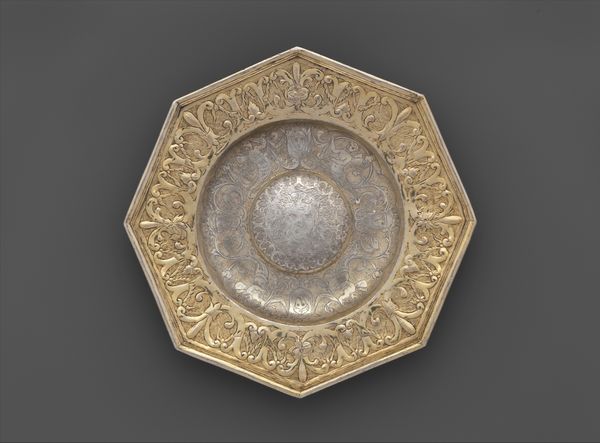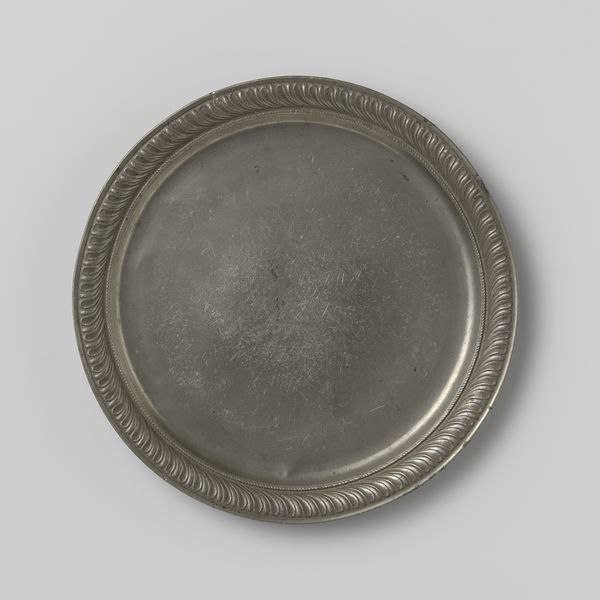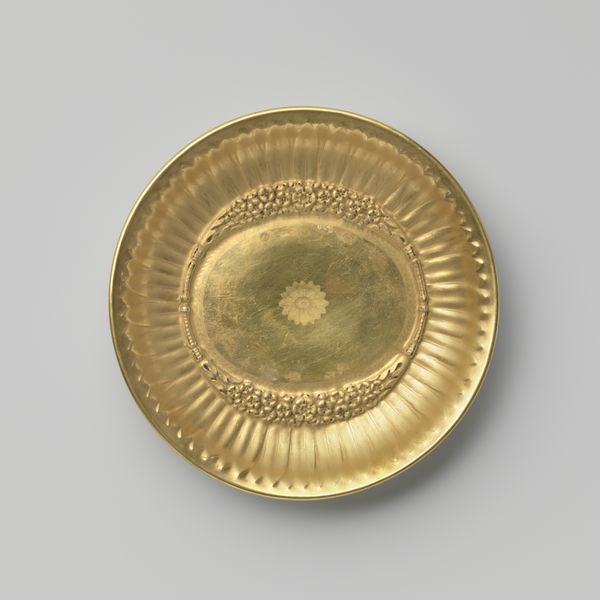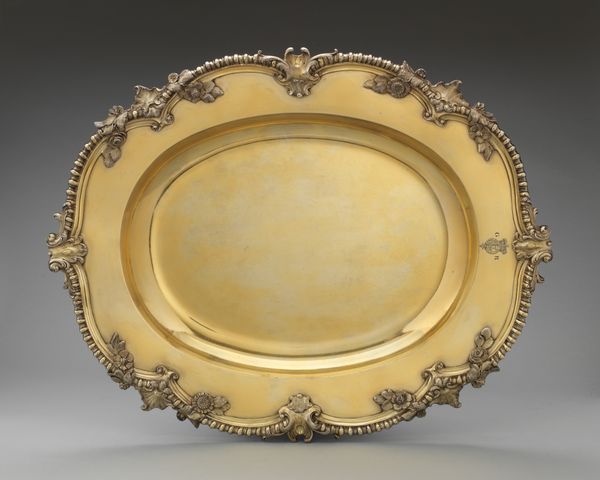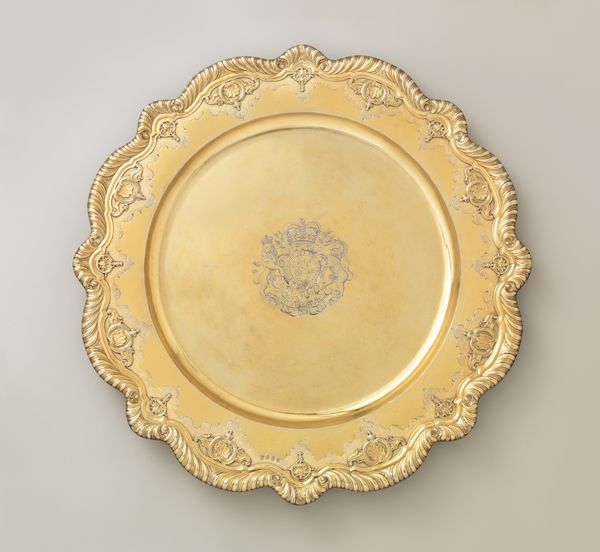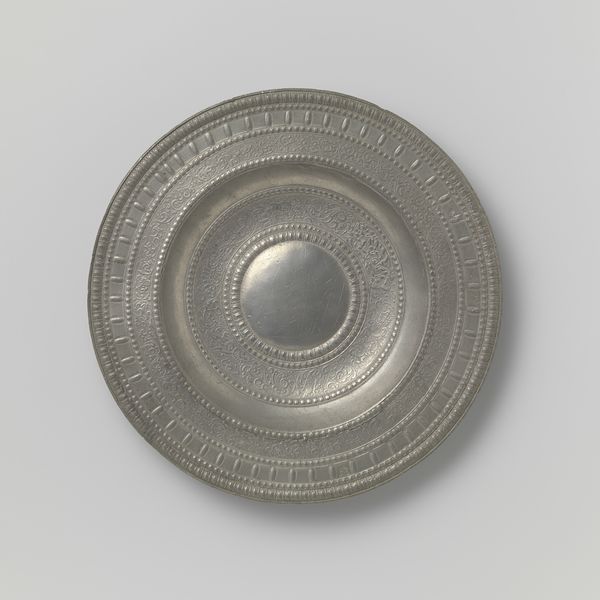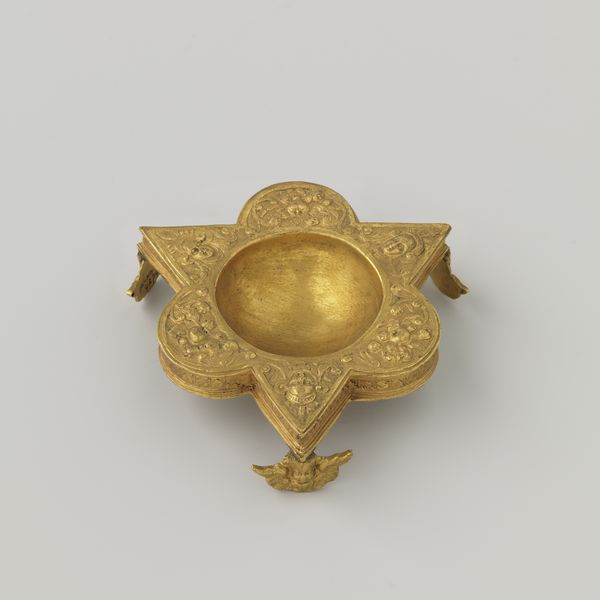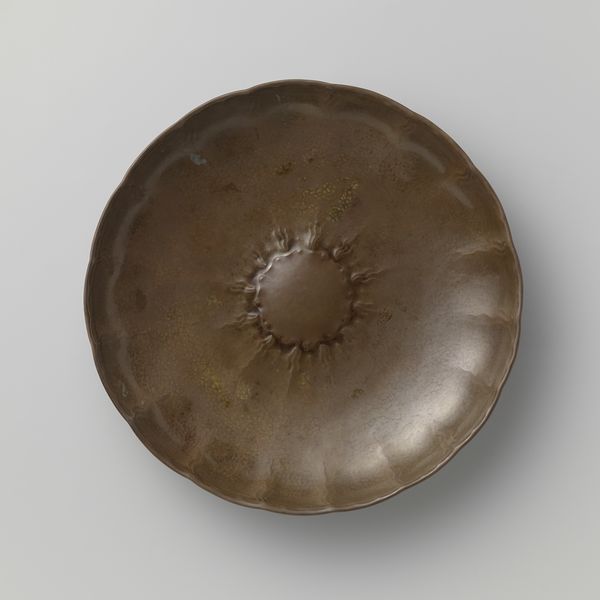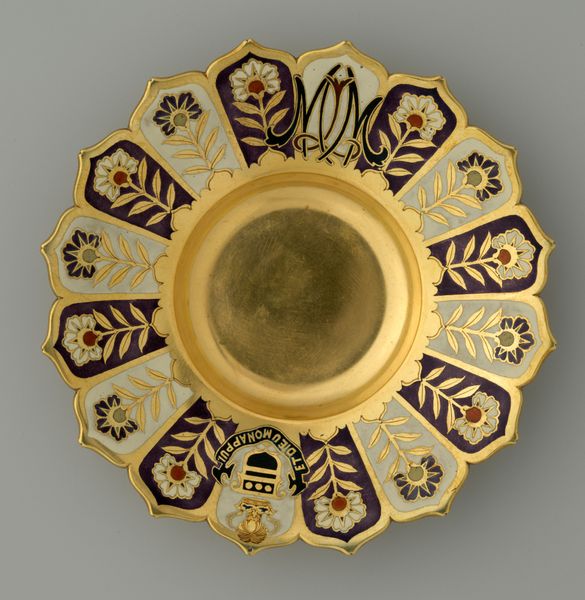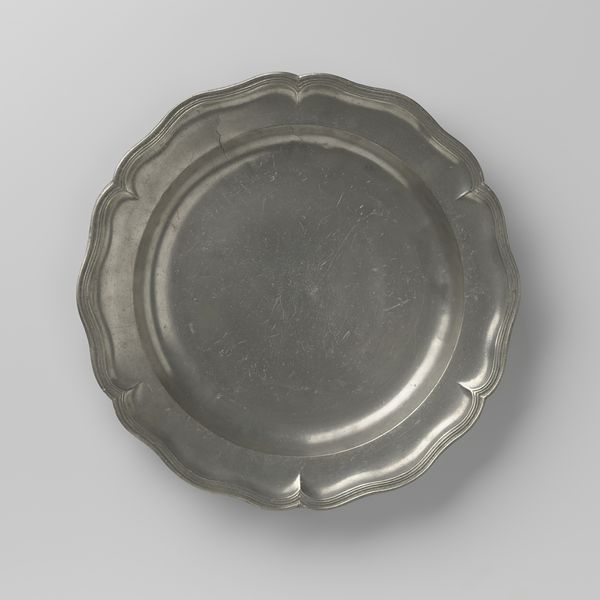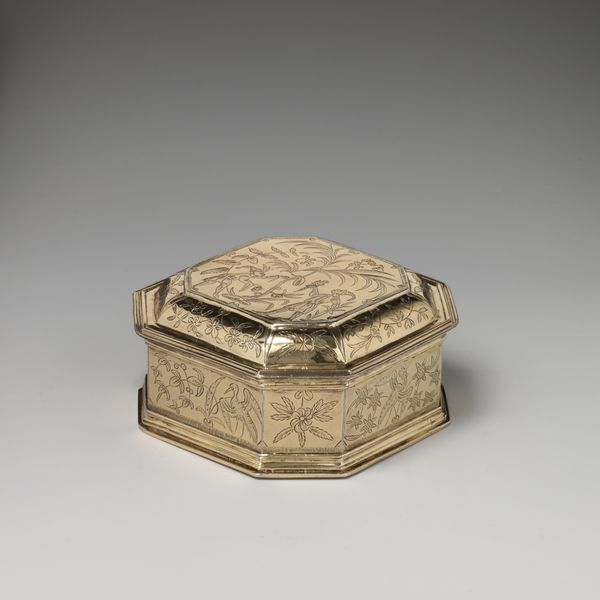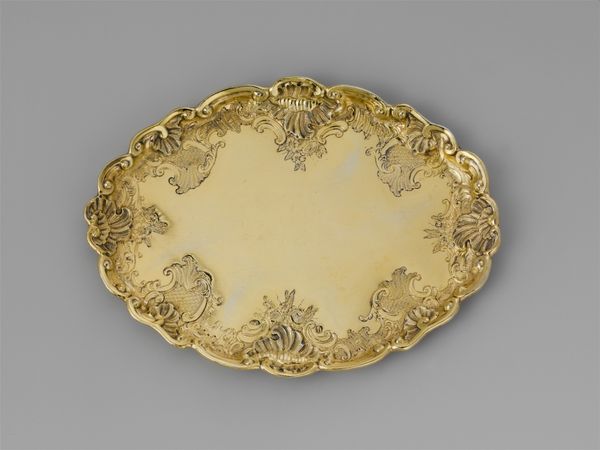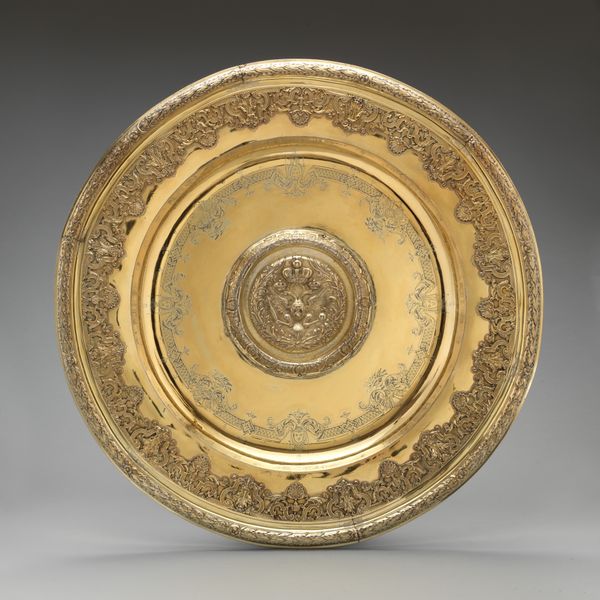
silver, metal, sculpture
#
silver
#
baroque
#
metal
#
sculpture
#
ceramic
#
decorative-art
Dimensions: Overall (confirmed): 2 1/2 × 11 1/8 × 11 1/8 in., 32 oz. 19 dwt. (6.4 × 28.3 × 28.3 cm, 1025.489g)
Copyright: Public Domain
Curator: This stunning silver dish, crafted by Lewis Mettayer between 1714 and 1715, offers a fascinating glimpse into the world of Baroque decorative arts. Part of a larger set, it's currently housed here at the Metropolitan Museum of Art. Editor: My immediate reaction is the shimmering elegance of it. The form, while simple in concept, exudes a powerful aura of wealth and aristocratic control, particularly because the dish appears untouched. Curator: Absolutely, that controlled aesthetic speaks volumes. The Georgian royal cipher at its center isn’t merely decorative. This dish broadcasts power, designed to reinforce a specific social hierarchy and the divine right of kings, particularly pertinent so soon after the Act of Union. How does the objecthood of it all resonate with the historical meaning? Editor: Well, it's meticulously crafted from silver, pushing back against some kind of ‘natural’ imperfection, transformed through labor into a symbolic object of near-unquestionable value. We should remember that someone worked for months or years to complete just one such platter and probably with no guarantee of consistent material supply. Curator: Precisely, the artistry on display here cannot be divorced from the labour required to produce it. What social conditions made such extravagant commissions possible? The engravers, the silversmiths... it reflects labour exploitation normalized by colonial extraction to ensure the king had nice plates. Editor: I think too that by focusing on the materiality, we can better appreciate the labour of this historical production. It’s the repetitive hammering, the precise etching—a pre-industrial process dictating a different temporal relationship between maker and object. It demands we question our relationship to similar but automated processes today, especially because something like this likely went untouched, at least by the folks doing the labor! Curator: Examining this Baroque dish then lets us grapple with ongoing power imbalances and cultural narratives surrounding class, luxury and taste that endure today. It also illustrates how gender informed Baroque politics; a focus on material culture such as clothing and plate, often mediated how gender ideals played out in court society, how royal identity was fashioned. Editor: In short, by looking closely at its production and circulation, this seemingly simple silver dish can tell us quite a lot. Curator: Exactly. And how it intersects with broader socio-political structures can help inform contemporary conversations about representation, materiality, gender and inequity in the 21st century.
Comments
No comments
Be the first to comment and join the conversation on the ultimate creative platform.
